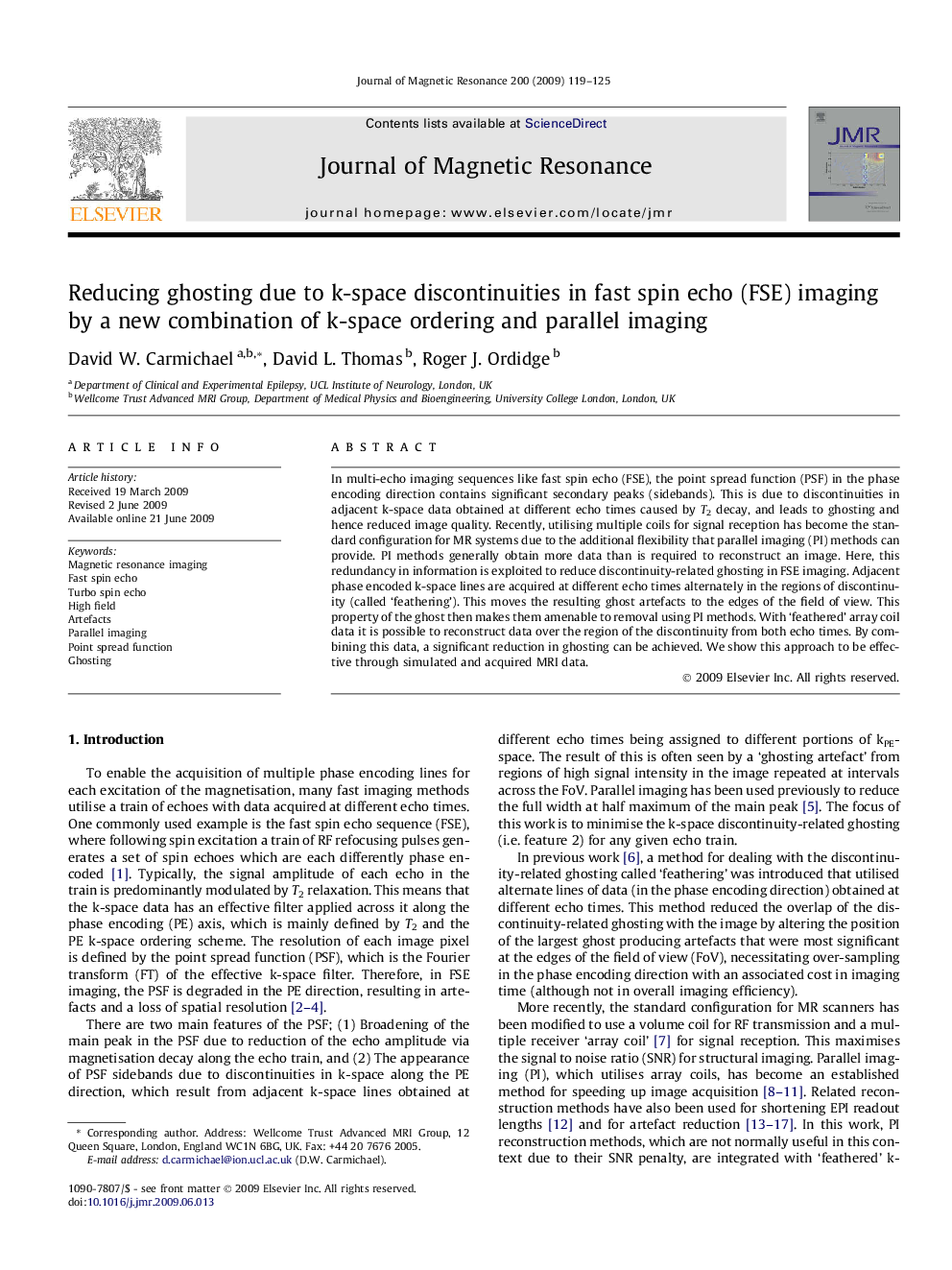| Article ID | Journal | Published Year | Pages | File Type |
|---|---|---|---|---|
| 5406874 | Journal of Magnetic Resonance | 2009 | 7 Pages |
Abstract
In multi-echo imaging sequences like fast spin echo (FSE), the point spread function (PSF) in the phase encoding direction contains significant secondary peaks (sidebands). This is due to discontinuities in adjacent k-space data obtained at different echo times caused by T2 decay, and leads to ghosting and hence reduced image quality. Recently, utilising multiple coils for signal reception has become the standard configuration for MR systems due to the additional flexibility that parallel imaging (PI) methods can provide. PI methods generally obtain more data than is required to reconstruct an image. Here, this redundancy in information is exploited to reduce discontinuity-related ghosting in FSE imaging. Adjacent phase encoded k-space lines are acquired at different echo times alternately in the regions of discontinuity (called 'feathering'). This moves the resulting ghost artefacts to the edges of the field of view. This property of the ghost then makes them amenable to removal using PI methods. With 'feathered' array coil data it is possible to reconstruct data over the region of the discontinuity from both echo times. By combining this data, a significant reduction in ghosting can be achieved. We show this approach to be effective through simulated and acquired MRI data.
Keywords
Related Topics
Physical Sciences and Engineering
Chemistry
Physical and Theoretical Chemistry
Authors
David W. Carmichael, David L. Thomas, Roger J. Ordidge,
